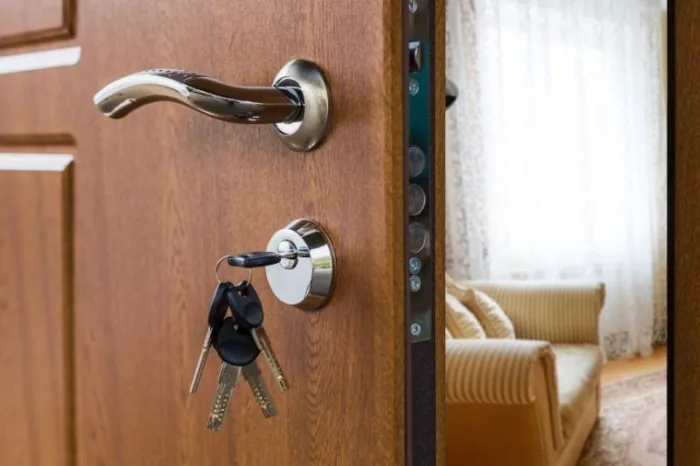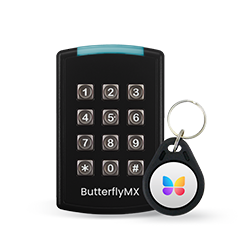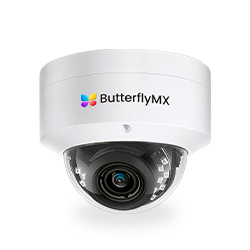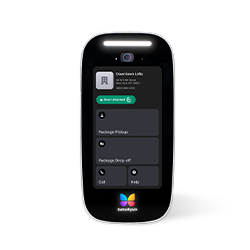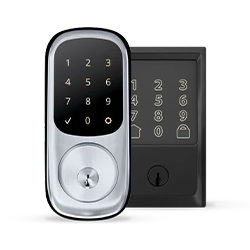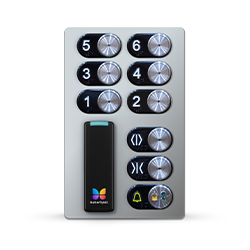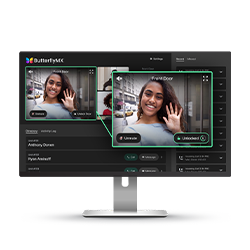Key takeaways
- Chicago’s CRLTO outlines strict rules for when and how landlords can enter a rental unit, typically requiring at least 48 hours’ notice between 8 a.m. and 8 p.m.
- Emergencies allow for entry without prior notice, but landlords must still act respectfully, announce themselves, and document the reason for entry.
- Tenant consent can override notice requirements, but it’s essential to obtain and record that consent to prevent disputes.
- Property managers nationwide can learn from Chicago’s example, clear communication, documentation, and respect for tenant privacy are key to staying compliant.
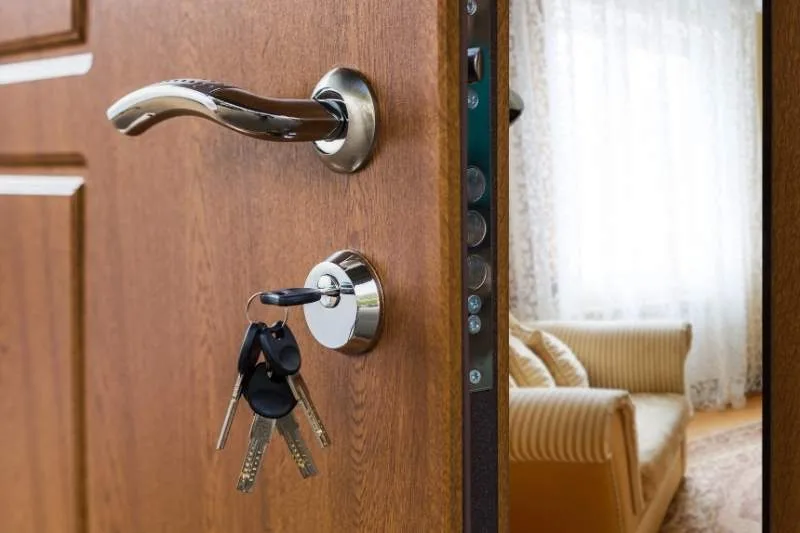
Guest blog written by Domu
We at Domu have been operating an apartment listing business for quite a while now, so we’ve gotten good at knowing what Chicago landlords and tenants search for most. And, surprisingly, one of the primary topics of interest concerns the rules regarding access to apartments, with tenants naturally seeking to deny access as much as possible and landlords hoping to gain access with minimal delay. So we’ve taken it upon ourselves to provide some much-needed guidance.
Although this article focuses on Chicago’s CRLTO, one of the most detailed landlord-tenant ordinances in the country, the lessons here are relevant to successful property managers everywhere. Rules governing access vary widely, but the risks of missteps are universal.
This post covers:
More than 40K, 5-star reviews!

Video Intercoms
Open doors, gates & garages from anywhere.

QR Code Intercom
Smartphone-based visitor access.
Access Control
Fob, key cards, PINs, and mobile apps.
Security Cameras
Visibility throughout your property.
Vehicle Access
Hands-free access for gates & garages.
Package Room
Receive, store, and manage deliveries.
Smart Locks
Connect to all major brands and models.
Elevator Controls
Unlock key-fobbed elevators for anyone.
Front Desk Station
See all your doors and cameras in one place.
When can landlords enter a unit?
Understanding when landlords can legally enter a tenant’s unit is one of the most important aspects of property management — and one of the most common sources of tension. Chicago’s Residential Landlord and Tenant Ordinance (CRLTO) provides detailed guidance to balance a landlord’s right to access with a tenant’s right to privacy. Whether you manage a single building or an entire portfolio, knowing these rules helps you avoid costly disputes, maintain trust with residents, and ensure full compliance with local law.
Disclaimer: Tenants may not unreasonably withhold consent for these types of access, and the CRLTO overrides any lease provisions to the contrary. Note: the CRLTO does not apply to every residential lease in Chicago; exemptions exist under Section 5-12-020.
Rules on landlord entry:
Access with advance notice
You are entitled to enter a tenant’s apartment with at least 48 hours’ notice, between 8:00 AM and 8:00 PM, for the following purposes.
Purposes include:
- Making necessary or agreed repairs, improvements, decorations, or alterations.
- Supplying necessary or agreed services.
- Permitting or effectuating government-mandated inspections.
- Showing the unit to prospective purchasers, lenders, or contractors, or (within the final 60 days of the lease) to prospective tenants.
- Ensuring compliance with lease terms.
- If access is needed for repairs in common facilities or other apartments, you may issue a general notice to all affected tenants.
Notice may be delivered by phone, mail, or any reasonable method intended to reach the tenant.
Access without advance notice
You may enter at any time, without prior notice.
These instances include when:
- Building repairs unexpectedly require access, or another emergency demands immediate action
- If the tenant is not present during entry, you must provide notice within two days afterward
Even in emergencies, best practice is to knock and announce before entering. This small step shows respect for the tenant’s privacy and reduces the risk of misunderstandings later. Just as important, the CRLTO (§ 5-12-050) expressly prohibits landlords from abusing their right of access or using entry as a form of harassment.
To stay compliant, limit your visits to legitimate purposes, document your reasons for entry, and avoid conduct that could be viewed as retaliatory or intrusive.
At this point, it is prudent to turn to a few illustrative cases that demonstrate how routine access issues can escalate into litigation and how landlords can avoid repeating costly errors.
Discover our complete beginner’s guide to access control:
Case studies
Legal rules are only half the story — what really matters is how those rules play out in real-world scenarios. The following case studies highlight how seemingly routine access situations can quickly escalate into legal disputes when communication breaks down or documentation is lacking.
Each example offers a practical takeaway to help property managers understand the nuances of access rights, avoid costly mistakes, and maintain professional, compliant relationships with tenants.
Let’s dive into three relevant case studies:
- Case study #1: Privacy disputes when tenants monitor entry
- Case study #2: Tenant consent and short-notice entry
- Case study #3: Access claims after tenant abandonment
Case study #1: Privacy disputes when tenants monitor entry
In one particularly nasty piece of litigation involving a luxury Lincoln Park apartment, the paranoid renter sprinkled tiny cameras throughout the unit. So when one of the landlord’s employees entered to make a repair (upon proper notice and with full consent), he innocuously stopped and glanced at a magazine sitting on a desk because the glossy cover photograph momentarily caught his attention.
He lingered for no more than a few seconds and didn’t touch anything before heading over to fix the faulty junction box. But the tenant was spying on him remotely and later sued for invasion of privacy. Her objective was to escape an expensive lease, so the landlord refunded her deposit to avoid defense costs.
Practical takeaway: Assume tenants may be monitoring entry, and maintain professionalism at all times to avoid privacy-related claims.
Case study #2: Tenant consent and short-notice entry
Although the CRLTO requires the landlord to provide at least two days’ notice to enter in most situations, the tenant has no basis to complain if the landlord grants permission on shorter notice.
In White v. Kocmond, 2018 IL App (1st) 170878-U, the dispute undoubtedly originated in something petty, leading the tenants to retain counsel, who then pursued claims under the security deposit rules. Their lawsuit not only sought damages for a presumably harmless violation of the security deposit rules, but also for violations of the ordinance’s access provisions.
Here’s what happened: During happier times, the landlord’s real estate agent would text the renters to alert them that he would be showing the apartment to some prospective new tenants on the following afternoon (which was less than two days’ notice), but rather than deny permission to enter, the tenants would reply by saying things like “that’s fine, we’re out in the suburbs” or “no sweat, the dog will be there.”
The trial court ruled in their favor because the landlord entered on less than 24 hours’ notice, but the appellate court reversed, finding that the tenants consented. Any good criminal lawyer will tell you that the Fourth Amendment doesn’t count for a hill of beans when police conduct a warrantless search if the suspect consents to the intrusion. Well, the same principle applies here. If the landlord requests access to the unit in ten minutes and the tenant says, “Fine,” then the ordinance has not been violated.
Practical takeaway: Tenant consent can override strict notice rules, but landlords everywhere should document that consent clearly to avoid disputes.
Case study #3: Access claims after tenant abandonment
In Salier v. Delta Real Estate Investments, 2023 IL App (1st) 181512-U, the tenants asked to be let out of their lease early, playing the “sick mother” card, but the landlord didn’t buy it (with the evidence ultimately vindicating its skepticism).
The tenants weren’t willing to take no for an answer, however, so they skipped out early and took their chances. They subsequently sought advice from counsel, who promptly dragged the landlord into court based on alleged violations of the security deposit rules.
The tenants’ attorney also felt the need to throw in a gratuitous claim for damages of one month’s rent plus attorneys’ fees because the landlord entered the unit without advance notice, even though nobody actually entered the apartment until after the tenants vacated.
Fortunately, the court rejected the access claim, recognizing that the tenants could not claim to have been damaged if the landlord didn’t enter the unit until after they left. In legal parlance, liability for violating the access provisions of the ordinance is not “strict.” The tenant needs to adduce at least some evidence of injury.
Practical takeaway: Abandonment complicates access rights. Always verify occupancy status and document your reasoning before entering a unit.
Remedies for CRLTO violations:
Lease termination, damages, injunctive relief, and attorneys’ fees
These remedies, though specific to Chicago’s CRLTO, reflect a broader trend toward stronger tenant protections nationwide.
If either party violates the CRLTO’s access provisions, the other may:
- Terminate the lease (though this carries risk if the termination is later deemed wrongful).
- Seek a court order (“injunctive relief”) requiring access or stopping unlawful entry.
- Pursue damages, with tenants entitled to the greater of one month’s rent or twice actual damages.
The ordinance also allows the “prevailing plaintiff” to recover attorneys’ fees. A landlord may only recover fees by prevailing on a counterclaim. Courts have applied these rules inconsistently, so landlords should not assume their legal costs will be reimbursed.
Practical takeaway: Chicago’s penalties may be unique, but the trend is clear: tenant remedies are expanding nationwide, and courts often favor tenants. Property managers everywhere should factor legal risk into compliance planning.
Ready to reach renters in Chicago?
For over a decade, Domu has connected landlords with qualified tenants through Chicago’s most trusted local rental marketplace. Beyond driving high-quality leads, Domu provides landlord resources (including model lease templates, tenant screening solutions, and neighborhood guides) to help property managers minimize risk and maximize occupancy.
List your property today on Chicago’s #1 ILS.

Author’s Bio:
Domu is Chicago’s premier apartment listing service and landlord resource hub. Combining deep local knowledge with practical insights, Domu equips property owners and managers with the tools to lease confidently and stay compliant in Chicago’s evolving rental market.

Get your free quote!
Fill in the form below, and we'll email you right back.
Want a free quote?
Fill in the form below, and we'll email you right back.
You’ll be redirected shortly...
